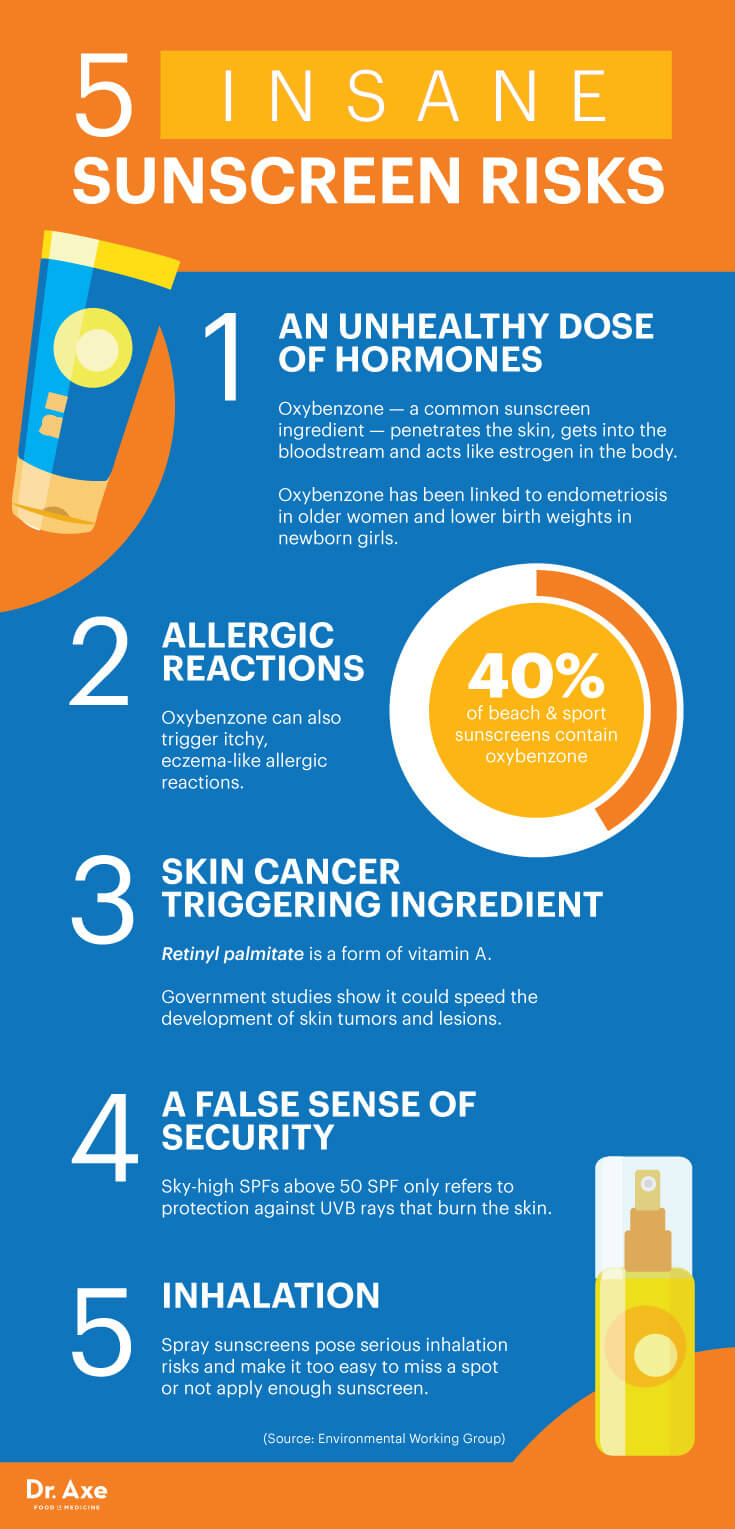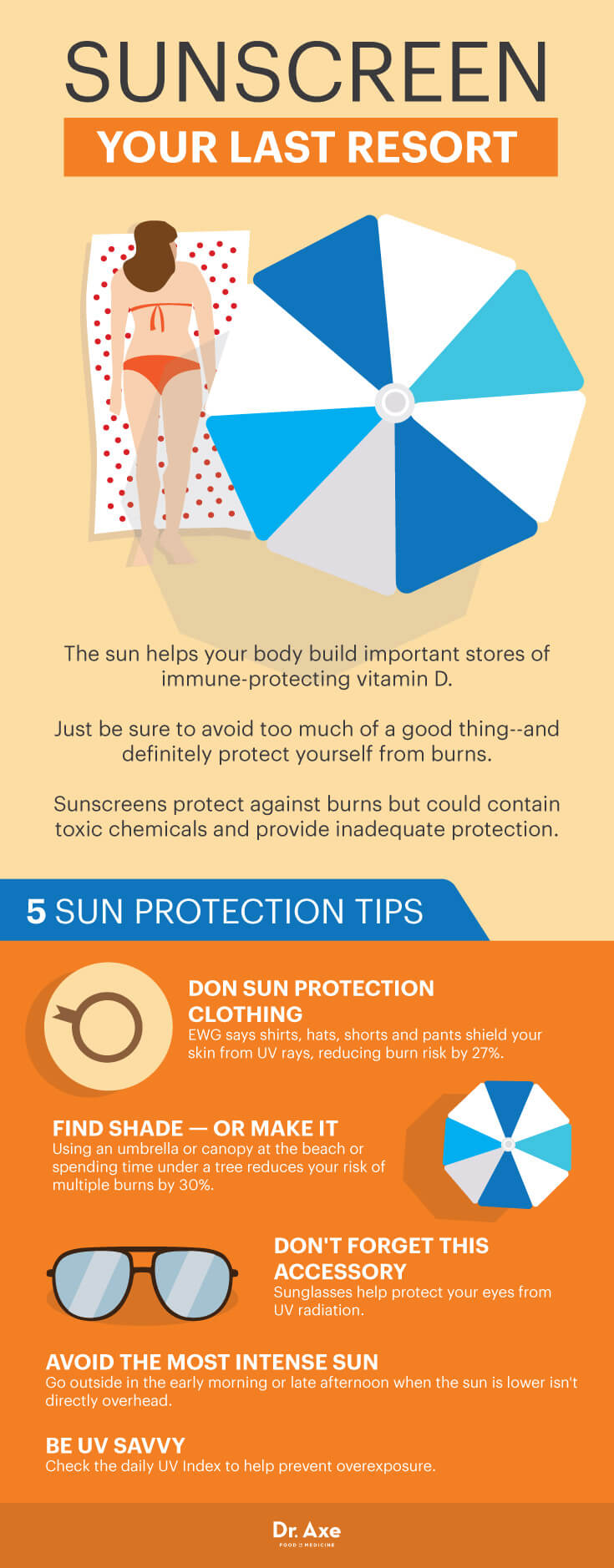Sun is surely providing our body with many different benefits, one of them being Medical News Today, but during the hot summer days and the beach season approaching, we should find a sunscreen that will reduce our risk of sunburns, overexposure, and possibly skin cancer too.
There are lots of sunscreens on the market nowadays, but they are all created differently. The Environmental Working Group (EWG) reports from spring 2021 they have tested various sunscreens, where 72% of them have been shown to contain harmful ingredients or improper sun protection.
The results of the EWG’s 10th annual Guide to Sunscreens report show that even though the sunscreen content has improved greatly over the last decade, most of the sunscreens available in America still fail to provide enough protection against ultraviolet rays, and include toxic chemicals.
We must point out that there’s no perfect sunscreen, as most of them include toxic chemicals and nanoparticles which can cross the blood-brain barrier and harm aquatic life as well. (1) 750 sunscreens, 100 lip products, and over 500 SPF-labeled moisturizers were analyzed by EWG, to rate their safety and efficiency in order to help users find a better choice.
The Best Sunscreen Brands of 2021
Beach & Sport
- All Good Unscented Sunstick, SPF 30
- Badger Sport Sunscreen Cream, Unscented, SPF 35
- Dr. Axe
- Babyganics Pure Mineral Sunscreen Stick, SPF 50+
- Thinksport Sunscreen, SPF 50+
- Babo Botanicals Clear Zinc Sunscreen Lotion, Fragrance-Free, SPF 30
- Blue Lizard Australian Sunscreen, Sensitive, SPF 30+
- Sunology Natural Sunscreen, Face, SPF 50
- Healthline
Moisturizers
- Badger Damascus Rose Face Sunscreen Lotion, SPF 25
- Andalou Naturals All in One Beauty Balm, Sheer Tint, SPF 30
- Keys Care KPRO Moisturizer with Sunscreen, SPF 30+
- bareMinerals Prep Step Mineral Shield Daily Prep Lotion, SPF 50
- Thinksport Every Day Face Sunscreen, SPF 30+
- Block Island Organics Natural Face Moisturizer, SPF 30
- Suntegrity Skincare 5 in 1 Natural Moisturizing Face Sunscreen, SPF 30
- Juice Beauty Mineral Moisturizer, Sheer, SPF 30
Kid-Friendly
- All Good Kid’s Sunscreen, SPF 33
- Adorable Baby Sunscreen Lotion, SPF 30+
- All Terrain KidSport Sunscreen Lotion, SPF 30
- Badger Kids Sunscreen Cream, SPF 30
- Draxe
- Draxe
- Bare Belly Organics Baby Sunscreen, SPF 30
- Blue Lizard Australian Sunscreen, Baby, SPF 30+
- California Baby Super Sensitive Sunscreen, SPF 30+
- BurnOut Kids Physical Sunscreen, SPF 35
- Goddess Garden Kids Sport Natural Sunscreen Lotion, SPF 30
- COOLA Suncare Baby Mineral Sunscreen Unscented Moisturizer, SPF 50
- Jersey Kids Mineral Sunscreen Lotion, SPF 30
- Sunology Natural Sunscreen, Kids, SPF 50
- Hampton Sun Sunscreen Lotion For Baby, SPF 45
- Draxe
- Kiss My Face Organics Kids Mineral Sunscreen, SPF 30
Avoid These Toxic Sunscreens
Since children are more prone to specific toxic chemicals and blistering sunburns obtained in the early stages of life might raise the risk of skin cancer, this year EWG has paid more attention to sunscreens for children. According to them, these are the worst children’s sunscreens:
- Coppertone Water Babies Sunscreen Stick, SPF 55
- Banana Boat Kids Max Protect & Play Sunscreen Lotion, SPF 100
- Coppertone Water Babies Sunscreen Lotion, SPF 70+
- CVS Baby Sunstick Sunscreen, SPF 55
- Coppertone Sunscreen Lotion Kids, SPF 70+
- Equate Kids Sunscreen Stick, SPF 55
- CVS Kids Wet & Dry Sunscreen Spray, SPF 70+
- Coppertone Sunscreen Continuous Spray, Kids, SPF 70
- Neutrogena Wet Skin Kids Sunscreen Spray, SPF 70+
- Hampton Sun Continuous Mist Sunscreen For Kids, SPF 70
- Coppertone Foaming Lotion Sunscreen Kids Wacky Foam, SPF 70+
- Up & Up Kids Sunscreen Stick, SPF 55
- Neutrogena Wet Skin Kids Sunscreen Stick, SPF 70+
Main Discoveries in the Sunscreen Report of EWG
- Around 50% of all sunscreen products available in America won’t pass the stricter standards in Europe as they aren’t able to filter sufficient UVA rays.
- The anti-aging antioxidant that can cause skin tumors and lesions on sunlight exposure, retinyl palmitate, was found in 10% of lip products, 14% of moisturizers with SPF, and 16% of sport and beach sunscreens.
- Almost 30% of the tested sunscreens were sprayed, which are difficult to be applied properly, and which pose an inhalation risk. These spray sunscreens are also a concern to the Food and Drug Administration, although they are still not banned by the agency.
- Oxybenzone, an allergen, and the hormone-disrupting chemical were found in 70% of non-mineral sunscreens.
- If you are one of those who avoid the sun, check your vitamin D levels, as sunscreens can lead to a deficiency of this vitamin.
Luckily, you can protect yourself from sunburns and produce enough amounts of vitamin D, without necessarily applying sunscreens to your skin.
How to Avoid Sun Overexposure without using Sunscreen?
As we mentioned, the sun is important for our health as it triggers the production of vitamin D in our bodies. Foods rich in vitamin D can provide you with this vitamin, but still, the best method is through direct sun exposure. Actually, 10 minutes of exposure to the sun helps the body produce about 10,000 Vitamin D units.
The Deficiency of this vitamin has been related to certain autoimmune diseases, cancers, osteoporosis, depression, heart disease, and other illnesses, so it’s crucial to get enough vitamin D. We should turn to sunscreens as our last option to protect from sunburns. There’s no clear proof that sunscreen usage prevents skin cancer, and in fact, some sunscreen ingredients can even fuel skin cancer.
You can lower your sunburn risk without applying sunscreen, by just wearing sunglasses, sun-protective clothing, and hats, and simply avoiding sun exposure during peak sunlight hours.
Final Thoughts
According to the EWG’s 10th Guide to Sunscreens report, there’s no such thing as perfect sunscreen. Mineral sunscreens generally have safer rates, but they usually include nanoparticles that haven’t been studied for long-term influence on aquatic or human health, and which aren’t tightly regulated.
They may even include hormone-disrupting chemicals and skin cancer-causing ingredients. Nevertheless, EWG’s report is helpful for people to find safer options and avoid the worst brands.
We should always take sun-protective measures like wearing sunglasses, and hats, avoiding peak sunlight for a longer time and seeking shades before we decide to use sunscreens. And when we decide to use sunscreen, we should ensure we have chosen one of the best and safer ones.
Via Draxe


